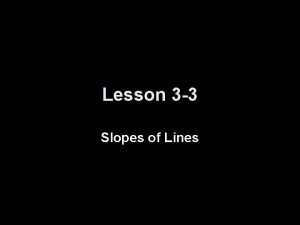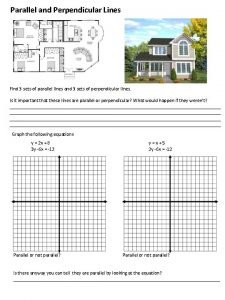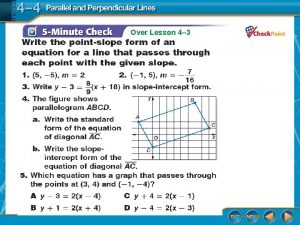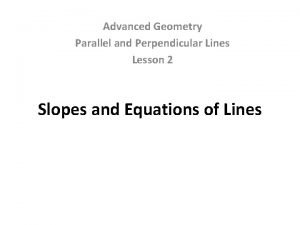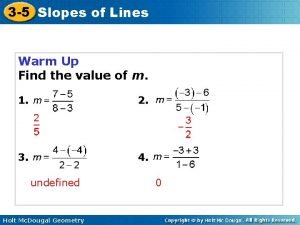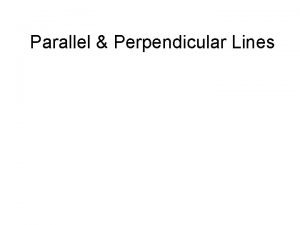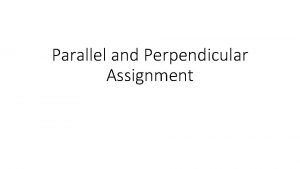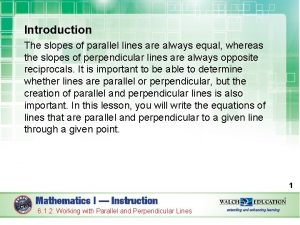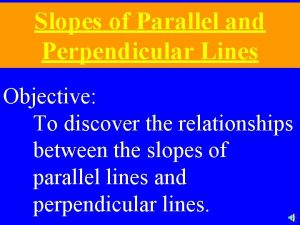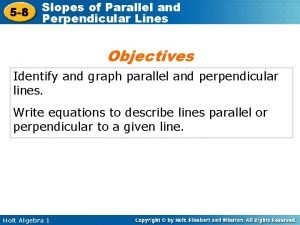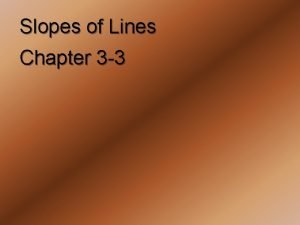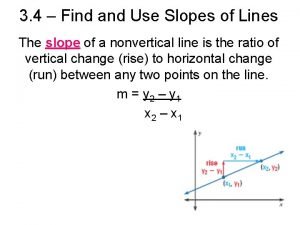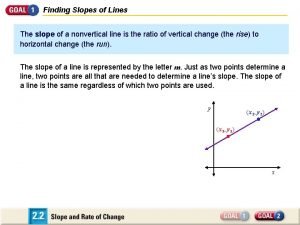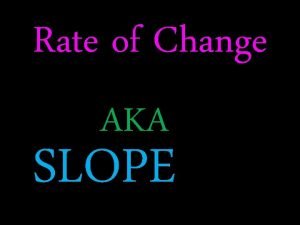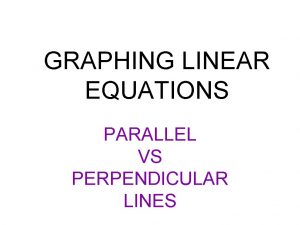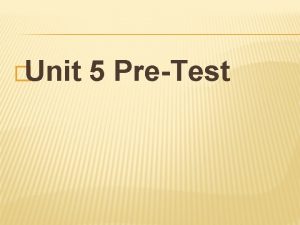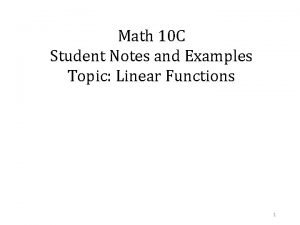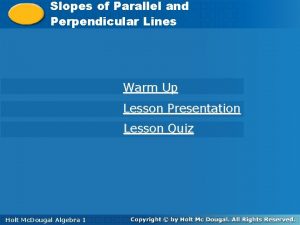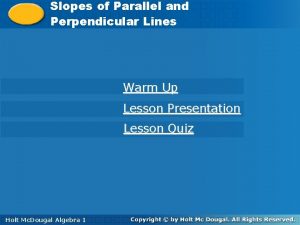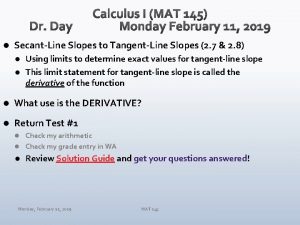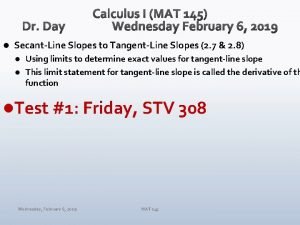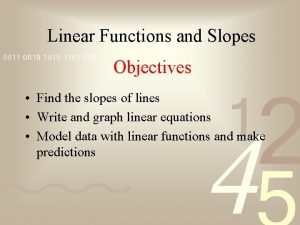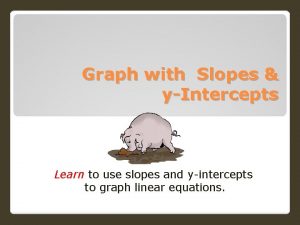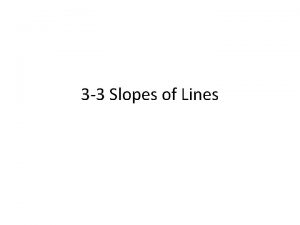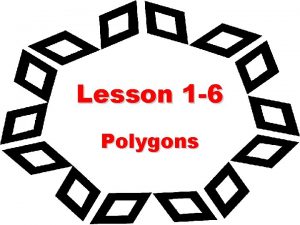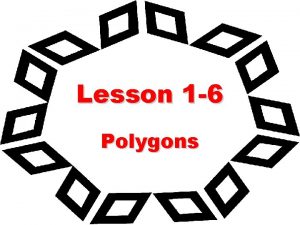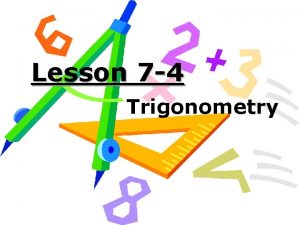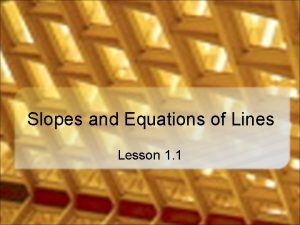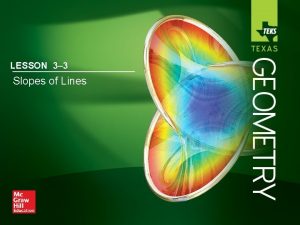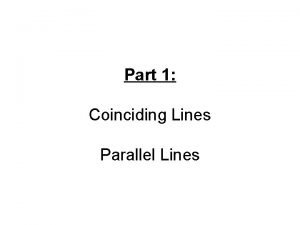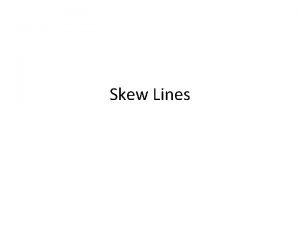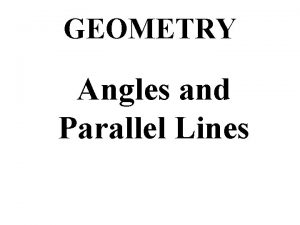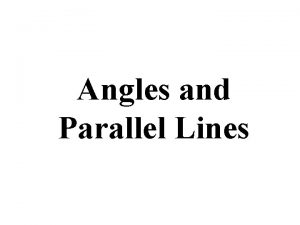Lesson 3 3 Slopes of Lines Ohio Content























- Slides: 23

Lesson 3 -3 Slopes of Lines

Ohio Content Standards:

Ohio Content Standards: Recognize and apply angle relationships in situations involving intersecting lines, perpendicular lines and parallel lines.

Ohio Content Standards: Describe and interpret rates of change from graphical and numerical data.

Ohio Content Standards: Recognize and explain that the slopes of parallel lines are equal and the slopes of perpendicular lines are negative reciprocals.

Ohio Content Standards: Compute and interpret slope, midpoint and distance given a set of ordered pairs.

Slope

Slope The ratio of a line’s vertical rise to its horizontal run.

Slope The ratio of a line’s vertical rise to its horizontal run.

Determine the slope of a line that contains the given points.

Determine the slope of a line that contains the given points. A(-3, 7), B(-1, -1)

Determine the slope of a line that contains the given points. C(0, -3), D(0, 4)

Determine the slope of a line that contains the given points. W(6, 2), X(-2, -5)

Determine the slope of a line that contains the given points. Y(6, -1), Z(-2, -1)

Postulate 3. 2

Postulate 3. 2 Two nonvertical lines have the same slope if they are parallel.

Postulate 3. 3

Postulate 3. 3 Two nonvertical lines are perpendicular if the product of their slopes is -1.

Determine whether FG and HJ are parallel, perpendicular, or neither.

Determine whether FG and HJ are parallel, perpendicular, or neither. F(1, -3), G(-2, -1), H(5, 0), J(6, 3)

Determine whether FG and HJ are parallel, perpendicular, or neither. F(4, 2), G(6, -3), -1, 5), J(-3, 10) H(

Graph a line that contains Q(5, 1) and is parallel to MN with M(-2, 4) and N(2, 1).

Assignment: Pgs. 142 -144 16 -32 evens, 52 -68 evens
 Lesson 3-5 slopes of lines answer key
Lesson 3-5 slopes of lines answer key Lesson 12-4 slopes of parallel and perpendicular lines
Lesson 12-4 slopes of parallel and perpendicular lines Slopes of parallel and perpendicular lines lesson 8-1
Slopes of parallel and perpendicular lines lesson 8-1 Lesson 2-4 slopes of parallel and perpendicular lines
Lesson 2-4 slopes of parallel and perpendicular lines 3-5 slopes of lines
3-5 slopes of lines Parallel line slope
Parallel line slope Parallel perpendicular or neither
Parallel perpendicular or neither Slopes of parallel and perpendicular lines assignment
Slopes of parallel and perpendicular lines assignment Parallel lines slope
Parallel lines slope Two lines are parallel if their slopes are
Two lines are parallel if their slopes are 8-1 slopes of parallel and perpendicular lines
8-1 slopes of parallel and perpendicular lines 3-3 homework slopes of lines
3-3 homework slopes of lines Find and use slopes of lines
Find and use slopes of lines Slopes of lines
Slopes of lines What is esp
What is esp Dynamic content vs static content
Dynamic content vs static content Slope types
Slope types Oversteepening
Oversteepening Parallel vs perpendicular lines equations
Parallel vs perpendicular lines equations I comb its hair and love its shining eyes
I comb its hair and love its shining eyes Tissue poem
Tissue poem Zero slop
Zero slop Whats a slope
Whats a slope Zero slope
Zero slope
